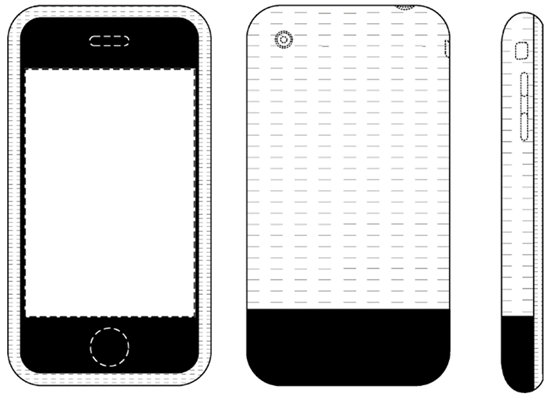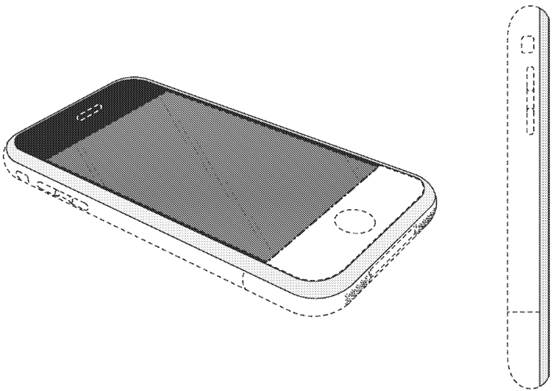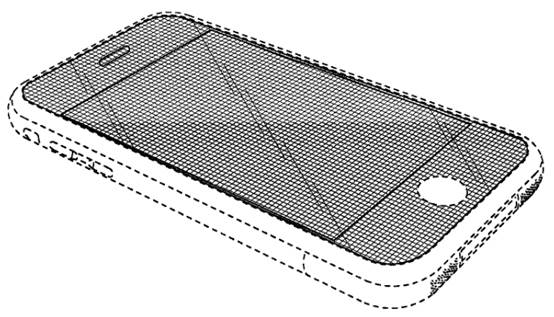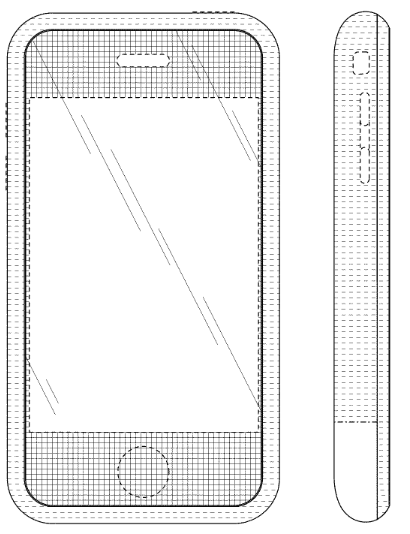During the design patent application process, companies often face a practical dilemma: they wish to protect the overall appearance of a product, yet also worry that competitors might easily circumvent protection for their core, partial innovations. Striking a balance between overall and partial protection is crucial, as it not only affects the commercial value of the design itself but also directly impacts the company's market competitiveness.
Consider a smartphone: while the overall device has a highly recognizable appearance, key differentiators are often concentrated in specific areas, such as the screen bezel, camera module, or even a particular decorative line. If only the overall design is protected, competitors might make minor alterations to specific details to avoid infringement. Conversely, protecting only a specific part may leave the company vulnerable if the overall shape is imitated, providing insufficient grounds for enforcement. Thus, determining how to effectively secure protection for both the overall design and its significant parts in a U.S. design patent application becomes a question of significant strategic importance.
Multiple Applications: A Primary Strategy for Dual Protection
In the examination practice of the United States Patent and Trademark Office (USPTO), a common strategy for achieving dual protection is to file multiple applications. The specific approach is as follows:
File one application for the overall design, using solid lines in the drawings for all features to secure protection for the complete appearance.
Simultaneously, file a separate application for the partial design, using solid lines to highlight the key part and broken lines for the remaining portions, thereby emphasizing the innovative value of that specific part.
Although this approach increases application costs, it offers distinct advantages in terms of the robustness of the patent portfolio and the effectiveness of future enforcement. For example:
For a mobile phone, a parent application can protect the entire device, while a child application specifically protects the screen portion.
For a bottle, one application can cover the bottle with its cap, and another can specifically protect the main body of the bottle.
For a car headlight, separate applications can protect the overall headlight assembly and the lens within it.
By combining overall and partial protection, companies can more effectively address infringement risks at different levels.
Limitations Under the Unity Requirement
Some companies might consider submitting multiple sets of drawings within a single application, presenting the overall and partial designs as different embodiments. However, this practice faces uncertainty in the U.S. According to the "unity" requirement under U.S. patent law, a single application must be directed to a single, distinct, and complete design. If the overall and partial designs differ significantly (e.g., an entire device versus just the screen portion), the examiner will likely require splitting them into separate applications. Only when the differences are minor (e.g., a bottle with and without its cap) might they be considered a single, unified design permissible within one application.
Therefore, if the overall and partial designs are significantly distinct, filing separate applications remains the more prudent choice.
The Strategic Value of the Continuation Application System
The U.S.-specific "continuation application" system provides companies with a highly flexible tool for patent portfolio strategy. A continuation application must be filed while the parent application is still pending (not yet granted, abandoned, or terminated). It benefits from the filing date or priority date of the parent application and maintains the same patent term. This allows a company to first file a parent application for the overall design, and then derive child applications for partial protection, or even further "grandchild" applications focusing on specific details. This method enables the creation of a layered, comprehensive protection network stemming from the same original disclosure. Unlike a "divisional application," which is typically filed in response to an examiner's restriction requirement, a continuation application is usually a proactive strategic choice by the applicant.
Practical Cases and Industry Insights
Multinational corporations like Apple and Samsung have extensively utilized this strategy. For instance, for products like the iPhone and AirPods, Apple often first files an application for the overall design, later deriving applications for partial protection of the screen, buttons, earphone stems, etc. Samsung has used continuation applications to generate multiple versions of partial protection, covering market variants.

Parent Case (USD558758S1 Filing Date: 2007-01-05)

Child Case 1 (USD581922S1 Filing Date: 2007-07-30)

Child Case 2 (USD618677S1 Filing Date: 2008-11-18)

Child Case 3 (USD834013S1 Filing Date: 2014-01-24)

Child Case 4 (USD698352S1 Filing Date: 2010-06-25)
As illustrated, based on an early parent case for an overall design (USD558758S1), Apple filed numerous continuation applications over subsequent years, each protecting specific parts like the screen and back cover.
These cases demonstrate that a combined approach to overall and partial protection significantly enhances a company's proactive stance in enforcement within the U.S. market and reduces the risk of design-around attempts by competitors.
Conclusion
In U.S. design protection, relying on a single application often fails to cover actual commercial risks adequately. By employing a combined strategy of a parent application for the overall design, coupled with child applications for partial designs and strategic use of continuation applications, companies can build a robust yet flexible patent protection network. This portfolio approach not only helps prevent competitors from circumventing protection through minor modifications but also grants companies greater initiative from both legal and commercial perspectives.
For companies aiming to establish brand barriers and long-term competitive advantages in the U.S. market, this strategy is undoubtedly a core consideration that cannot be overlooked.
